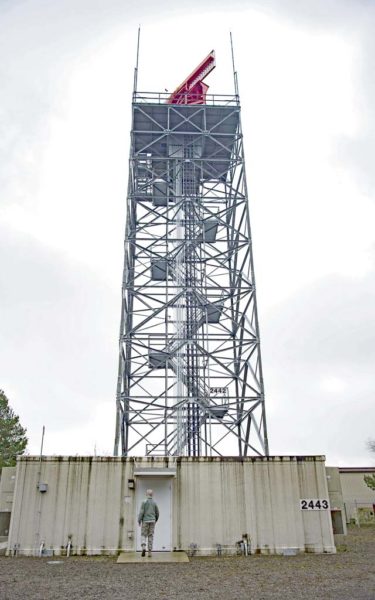
The most dangerous part of flying an aircraft is takeoff and landing. Air crews flying in and out of Ramstein are in good hands, though. No matter the weather, day and night, the 86th Operations Support Squadron Air Traffic Control and Landing Systems team ensures that when pilots need guidance on and off the flightline, the systems in place are ready.
As Airman 1st Class Connor Murph, 86th OSS ATCALS radar, airfield, and weather systems technician explained, the team monitors, repairs, and maintains all air traffic landing, radio and weather systems on Ramstein. Those systems have been making sure aircraft take off and land safely for as long as Ramstein has existed.
Though the ATCALS team maintains equipment, calling them maintainers isn’t exactly accurate. Electronics are a huge part of the job, yet calling them electricians isn’t right either. They work with computers and communications systems, but they aren’t information technology or communications Airmen.
“This career field really doesn’t fit into a box,” Murph said. “It’s a little bit of everything. Basically the air traffic control tower controls the aircraft, but all of their equipment is our responsibility; the radios they use to communicate with the airplanes, down to the monitors that they sit in front of.”
Making sure critical landing systems operate correctly is no small task. Murph said the job takes attention to detail, a huge database of knowledge, and the ability to withstand heights.
ATCALS technicians climb some of the tallest structures on base, using their extensive knowledge of the systems to conduct repairs and preventative maintenance inspections.
“You have to be very careful, especially working inside some of our systems,” said Tech. Sgt. Jerel Sledge, radar, airfield, and weather systems production control noncommissioned officer in charge. “You have to make sure you’re not sticking the wrong tools in the wrong area because you could easily blow apart a circuit card or shock yourself. That means you also have to be knowledgeable about the systems as a whole.
Murph explained that one of the most important things ATCALS Airmen can do is learn the theories behind the systems they maintain. Only with that knowledge, can they figure out what’s wrong.
“The most difficult part of the job is trouble shooting,” Murph said. “For example, the instrument landing systems and the tactical air navigation systems have giant cabinets full of electronics. You’re supposed to have a certain output at the end, but there’s thousands of components that come in before that, and if there’s an issue you have to find it.”
Despite the challenges, Murph is at home with what he does.
“I love this job, honestly,” Murph said. “I kind of fell into it. I didn’t know what it was when I got the contract. Now I’m maintaining equipment worth millions of dollars. Every single flying operation that goes through this base uses our systems. It’s pretty cool.”



